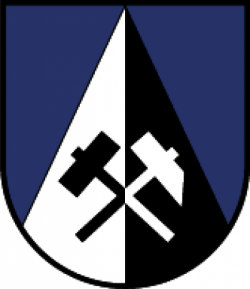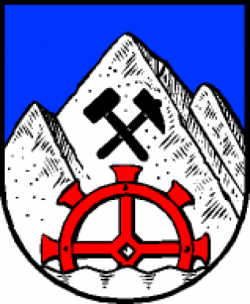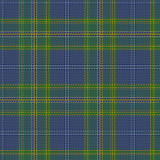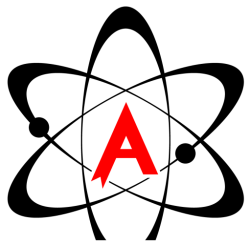What's the meaning of the Coat of arms of Estonia »
Coat of arms of Estonia
This page is about the meaning, origin and characteristic of the symbol, emblem, seal, sign, logo or flag: Coat of arms of Estonia.

The current coat of arms of Estonia is a golden shield which includes a picture of three blue lions in the middle, with oak branches placed on both sides of the shield. The insignia was copied from the coat of arms of Denmark, which ruled northern Estonia in the thirteenth century.
The coat of arms of Estonia depicts a golden shield, which includes three slim blue passant gardant lions in the middle and oak branches along both sides of the shield. The three lions derive from the arms of Danish king Valdemar II who had conquered northern Estonia in 1219.[1] The lions became part of the greater coat of arms of Tallinn, the center of Danish government in Estonia, and the knightages (ger. ritterschaften) of Harria and Viru.
In 1346, Denmark sold its Estonian dominion to the Teutonic Order after its power had been severely weakened during the St. George's Night Uprising of 1343-1346. The three lions, however, remained the central element of the greater coat of arms of Tallinn. In later centuries, the motif of the three lions transferred to the coat of arms of the Duchy of Estonia, the Ritterschaft of Estland, and to the coat of arms of the Governorate of Estonia. The Riigikogu (the state assembly) of the independent Republic of Estonia officially adopted the coat of arms on June 19, 1925.
The coat of arms was officially banned following the occupation of Estonia by the Soviet Union in 1940, and replaced with the Soviet-inspired coat of arms of the Estonian SSR. Soviet officials persecuted and jailed anyone using the coat of arms or the national colors of Estonia. The re-adoption of the national symbols, which was finally achieved on August 7, 1990, marked one of the high points in the struggle for the restoration of independent Estonia. The use of the coat of arms is regulated by the Law on State Coat of Arms, passed on April 6, 1993.
- 886 Views
Graphical characteristics:
Asymmetric, Closed shape, Colorful, Contains both straight and curved lines, Has crossing lines.
Category: Emblems.
Coat of arms of Estonia is part of the Coat of Arms group.

More symbols in Coat of Arms:
A coat of arms is a unique heraldic design on an escutcheon (i.e. shield), surcoat, or tabard. The coat of arms on an escutcheon forms the central element of the full heraldic achievement which consi… read more »
More symbols in Emblems:
An emblem is an abstract or representational pictorial image that represents a concept, like a moral truth, or an allegory, or a person, like a king or saint. Although words emblem and symbol are of… read more »
Citation
Use the citation below to add this symbol to your bibliography:
Style:MLAChicagoAPA
"Coat of arms of Estonia." Symbols.com. STANDS4 LLC, 2024. Web. 26 Jul 2024. <https://www.symbols.com/symbol/coat-of-arms-of-estonia>.














Have a discussion about Coat of arms of Estonia with the community:
Report Comment
We're doing our best to make sure our content is useful, accurate and safe.
If by any chance you spot an inappropriate comment while navigating through our website please use this form to let us know, and we'll take care of it shortly.
Attachment
You need to be logged in to favorite.
Log In